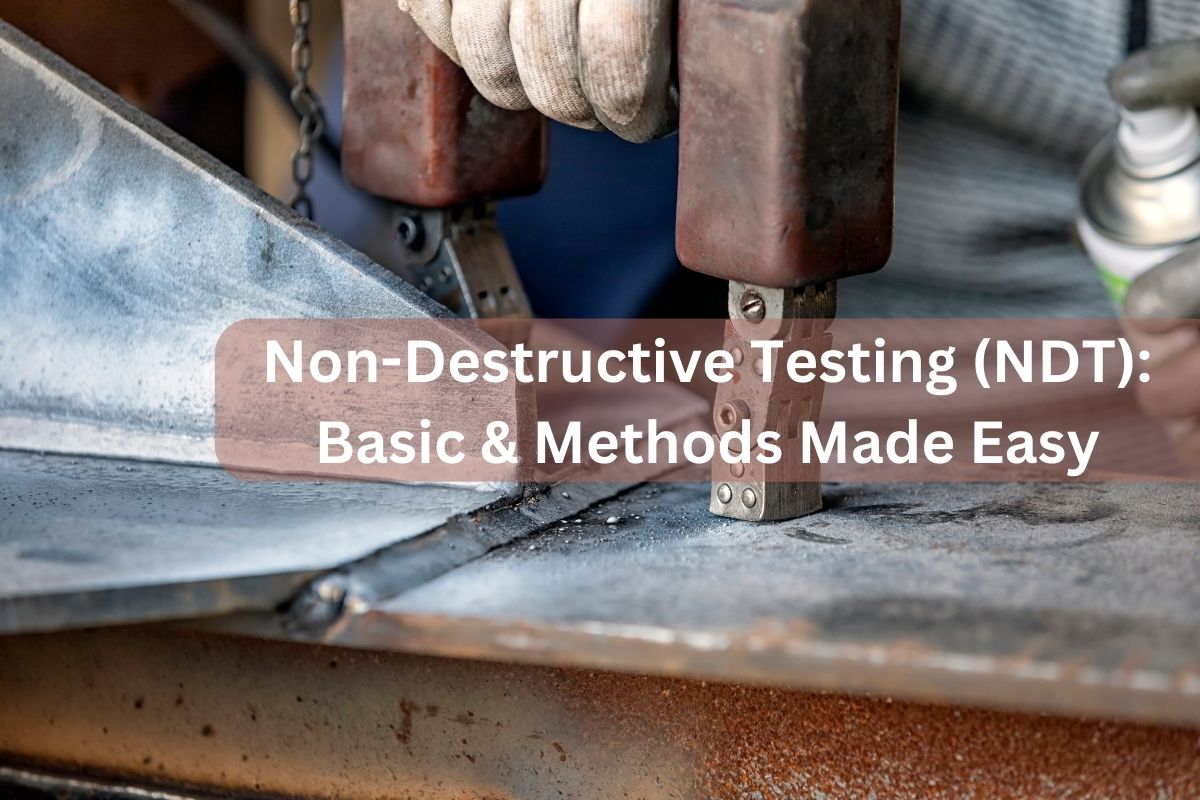Testing in welding is a step that should not be missed to find out the quality and also the weld results that are in accordance with standards.
This article will talk about Non-Destructive Testing (NDT) methods in welding.
Here is the discussion.
What is Non-Destructive Testing (NDT)
NDT is an analytical technique performed to evaluate a material without destroying the function of the test objects.
Read Also : Destructive Testing in Welding: Basic & Complete Methods
Some of the tests included in the non-destructive method are as follows:
1. Penetrant Test
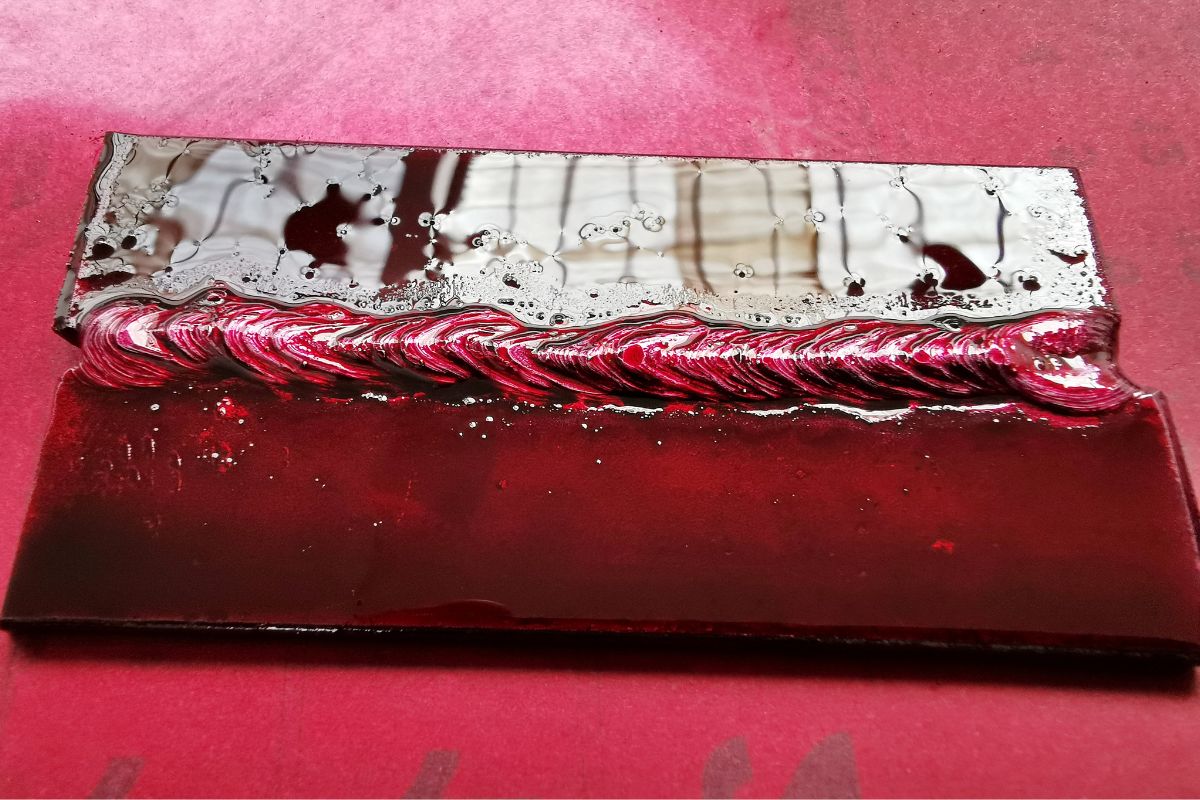
This test is conducted utilizing a capillarity system, or the process by which liquid spreads to the surface through tiny holes.
See ASME sec. VIII for details on how to conduct penetrant testing.
The code outlines the testing procedures and acceptance standards. The penetrant test allows for the detection of surface-level defects.
Pros :
- Simple to Use.
- Funding is inexpensive.
- Not impacted by the chemical makeup and magnetic characteristics of the substance.
- The examination area is extremely broad.
Cons :
The drawback of the penetrant test is, it is inappropriate for porous materials like wood due to the numerous misleading indications it will produce.
2. Magnetic Particle Test
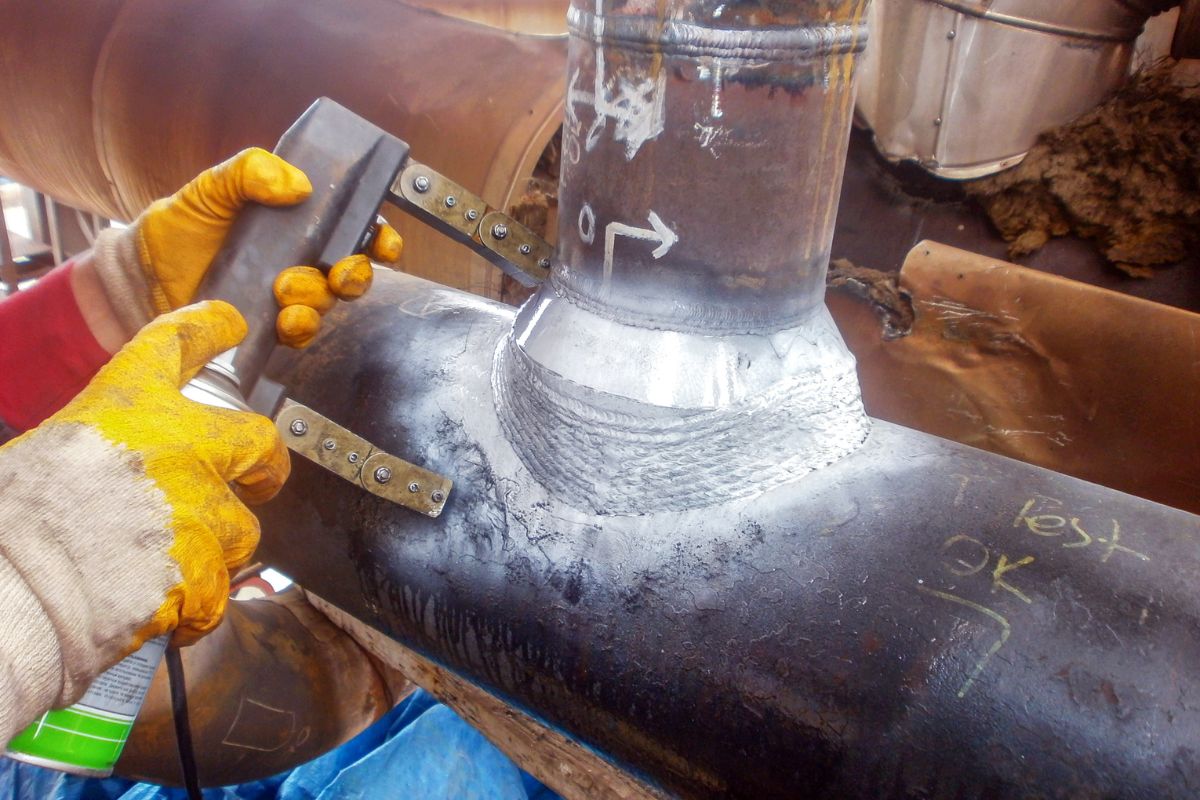
This kind of test employs magnetic powder that is sprayed on the test object, followed by white contrast paint, which is used to electrify the test object with a magnetic field using a Yoke.
It is possible to locate and diagnose issues in the surface, subsurface, and portions that are perpendicular to the yoke direction.
The magnetic powder will stream into the area where there are materials or welding defects. This kind of test is appropriate for identifying components or welds that point to cracks.
Pros :
- Simple to accomplish.
- Does not require specialized knowledge to use.
Cons :
- Only ferromagnetic materials are suitable for use.
- Due to the flaws orientation along the magnetic field lines of force, it is possible that certain faults go undetected.
3. Ultrasonic Test
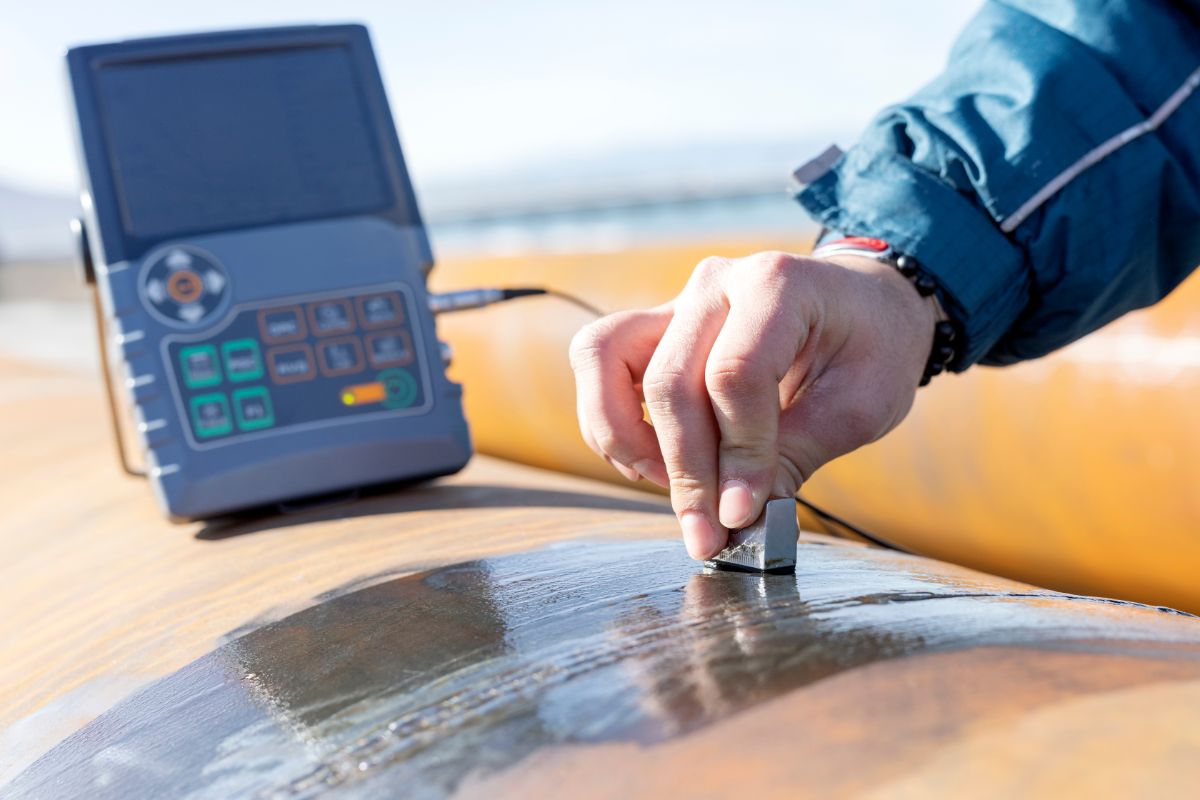
This kind of test uses ultrasonic waves and is non-destructive.
Any connection flaws or variations in the size and density of the material can be found using the findings of the reflected waves from the probe that emits waves on UT equipment or aircraft.
On the screen of the ultrasonic test plane, you can see the defect’s dimensions and location.
One of the benefits of UT is its ability to determine the size, location, and depth of flaws.
Pros :
- In comparison to other NDT techniques, the amount of penetration depth to detect faults is quite accurate.
- The test item just requires one side.
- The CRT screen displays distance information.
- Simple preparation of the test specimen.
- It can be used in addition to detecting flaws.
Cons :
- The probe need to be able to reach the surface.
- Compared to other methods, the skills and training needed are higher.
- Surface roughness and finishing affect inspection results.
- Thin items are challenging to inspect.
- It is necessary a reference standard
4. Radiography Test
Radiographic tests are a type of NDT.
This Non Destructive Test, is a type of test that uses X-ray and gamma-ray radiation to visually inspect a surface without actually damaging it.
The radiographic film can capture any shadows left by shoddy welds and construction on the material.
This test can identify existing faults in a weld or material but cannot determine how deep they are.
The radiography test operates on the basis of the following principle: As a result of the radiation’s fluctuating intensity, the radiography test will yield a different image on the film depending on the density and thickness of the material.
Pros :
- Able to find surface flaws in raw materials or weld metal.
- Able to display captured data.
- Noticeable flaws in 1:1 movies.
- Able to use in challenging positions.
Cons :
- There is a need for qualified personnel (Certified Personnel as ASNT requirement).
- Testing costs more than DPT, UT, and MT combined.
- The risks of X-ray and gamma radiation
5. Vacuum Test
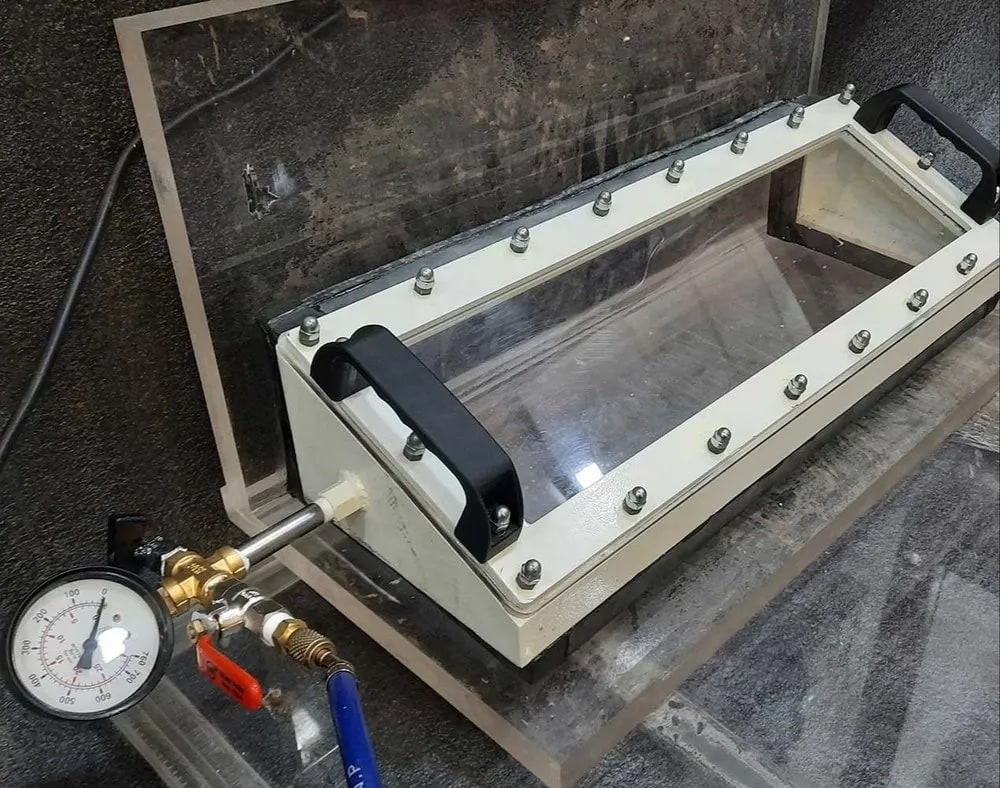
The fundamental idea behind this vacuum test is to find welding leaks by creating a vacuum around the test object using a clear tube or similar medium.
Soapy water that appears as a liquid in the tube.
The vacuum test’s operating principle is the polar opposite of the air pressure test’s operating principle.
Pros:
Because the compressor machine only uses compressed air, the power supply is simple to obtain.
6. Holiday Detector
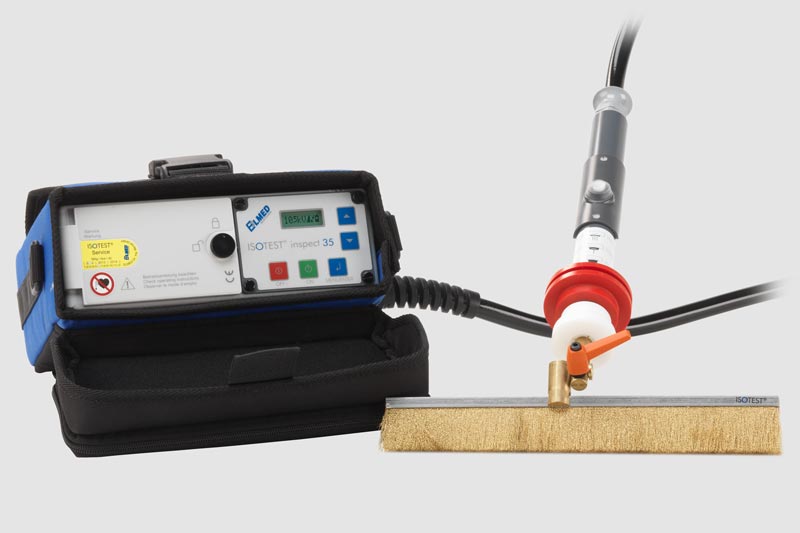
Holiday Detector is a tool that detects the presence of holes or porosity in a material.
For instance, welding on a pipe can leave empty gaps; the holiday detector’s job, in this case, is to find these gaps (porosity).
The Holiday Detector passes an electrical current across the coated substance, whether fresh or tarnished.
The gadget will sound or send a signal if there is a small hole or pinhole in the coating (new or old), either in the form of bubbles or porosity for new coatings.
There is typically tension between the coating and the metal with aged coatings.
Holiday detectors will identify the application and provide specifics regarding the amount of voltage (in KV) required for a given coating layer.
Pros:
- Can identify the precise position of a porous material.
- Can find tiny points (holes) in the material and locate them.
Cons:
With large materials, the brush inspection procedure takes considerable time.
Read Also : Discover Welding History: A Captivating Evolution
Conclusion
Since the effectiveness of the welding process depends on each stage, every welder must complete the steps correctly.
Technical work like this necessitates appropriate certification, adherence to safety protocols, and training.
Any welding component damage can be expensive and result in long-term structural damage to the finished product.
Any industry that uses welding, including the building, aviation, automotive, and other sectors, requires quality control.
Ensuring everything is perfectly welded beforehand will shield you from potentially disastrous dangers.
To guarantee successful welding, ensure you already understand Non-Destructive Testing (NDT) with the right technique.

